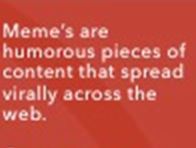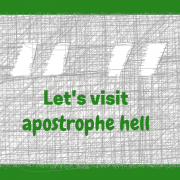Let’s visit apostrophe hell
I’m not the only person who dislikes misplaced apostrophes (or should I say apostrophe’s?). There’s a Flickr page called Apostrophe Hell with photos of apostrophe abuse. Misused apostrophes turn up frequently on Mistake Monday on this blog. Below you’ll see some examples. I share them to remind all of us—including me—to pay attention to apostrophes when writing and proofreading.
Its vs. it’s
It’s vs. its is a classic example of where apostrophes are often abused, as you’ll see in the Mistake Monday examples below. Most often there’s an apostrophe where it’s not needed.


Sometimes the mistake goes the other way. A sentence lacks the apostrophe needed to create the contraction for “it is.”

Other possessives
You need an apostrophe to form the possessive for most words other than “its” and “yours.” The proofreaders for the images below didn’t remember that.


Contractions
Apostrophes are also important to forming contractions.
For example, “let us” becomes “let’s”—at least that’s what should happen.
Random insertion of apostrophes
Sometimes people seem to insert apostrophes randomly. What was this person thinking?






One of my past editors had a brilliant way to get around apostrophe misuse: no contractions allowed. We had to write out “it is,” “let us,” and “will not,” for instance. As one final check for writers, we were to verify that every apostrophe represented possession. We became ingrained to read, for example, “against it’s benchmark” as “against it is benchmark.” I continue this review strategy. Great post.
Lisa, that’s a creative strategy. I like it. It works for formal reports. However, I would miss contractions in a piece that’s supposed to be conversational.
Thank you for taking the time to comment.